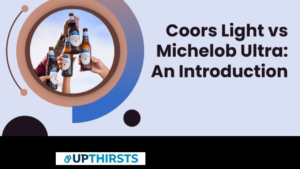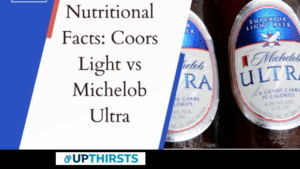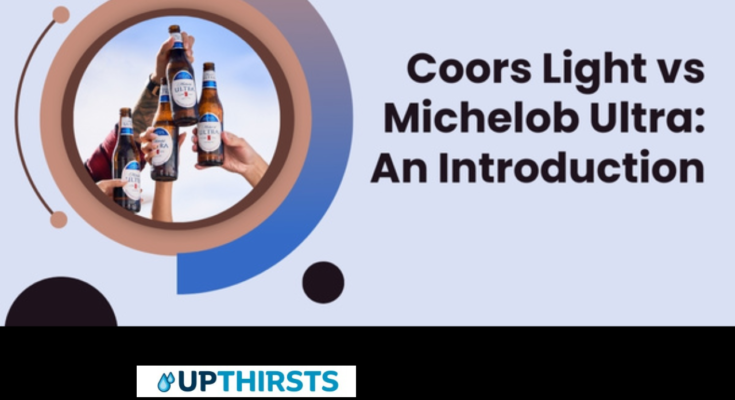Introduction:
Drinks: The Essence of Hydration and Pleasure
Drinks, in their myriad forms, are essential to human life, serving not only as a means of hydration but also as sources of nutrition, pleasure, and social interaction. From the first sip of water in the morning to a soothing cup of tea at night, beverages accompany us throughout our day, marking moments of break, celebration, and relaxation. This article delves into the significance of drinks in our daily lives, explores the variety of beverages available across cultures, and provides insights on making healthier drink choices.
The Vital Role of Beverages
Hydration is fundamental to our survival and well-being, with water playing a crucial role in maintaining bodily functions. However, our choice of beverages extends beyond mere survival, encompassing a range of drinks that satisfy thirst, complement our meals, and enhance our social and cultural practices.
Hydration and Health
At the most basic level, drinks like water, herbal teas, and fruit-infused waters provide the hydration necessary to support digestion, nutrient absorption, circulation, and temperature regulation. Dehydration can lead to fatigue, impaired cognitive function, and physical performance, making regular consumption of fluids essential for maintaining optimal health.
Nutritional Value
Many beverages, such as milk, fruit juices, and fortified drinks, offer nutritional benefits, including vitamins, minerals, and antioxidants. These nutrients can play a role in preventing chronic diseases, supporting bone health, and boosting immune function. However, it’s crucial to be mindful of added sugars and calories in some commercially available drinks, which can contribute to health issues if consumed in excess.
Cultural Significance
Drinks hold significant cultural value, with certain beverages integral to rituals, traditions, and social customs around the world. Whether it’s the communal experience of sharing a pot of tea, the ceremonial aspects of wine tasting, or the festive cheer of toasting with champagne, beverages are deeply woven into the fabric of cultural identity and heritage.
Pleasure and Relaxation
Beyond their functional and cultural roles, drinks are also a source of sensory pleasure and relaxation. The aroma of freshly brewed coffee, the refreshing zest of a cold lemonade on a hot day, or the comforting warmth of hot cocoa on a chilly evening can elevate our mood and provide moments of joy and comfort.
Embracing a World of Beverages
The world offers an astonishing diversity of drinks, each with its unique flavors, textures, and preparation methods. Exploring this variety can be a delightful sensory adventure and an opportunity to connect with different cultures and traditions. Here are some categories to consider:
- Water and Infusions: The backbone of hydration, available in still, sparkling, and infused varieties.
- Teas and Coffees: Enjoyed globally, these beverages range from the delicate flavors of green tea to the robustness of a dark roast coffee.
- Juices and Smoothies: Provide a nutritious burst of energy and a convenient way to consume fruits and vegetables.
- Dairy and Plant-Based Milks: Offer calcium and vitamin D, with plant-based alternatives catering to dietary preferences and restrictions.
- Alcoholic Beverages: Enjoyed in moderation, they can add a celebratory note or enhance the flavors of a meal.
Making Healthier Drink Choices
While the array of available beverages can be enticing, it’s important to make choices that contribute to our health and well-being:
- Prioritize Water: Make water your drink of choice for hydration, aiming for 8-10 glasses a day.
- Limit Sugary Drinks: Reduce intake of sodas, sweetened teas, and fruit drinks high in added sugars.
- Moderate Caffeine and Alcohol: Enjoy coffee, tea, and alcoholic drinks in moderation to avoid potential health risks.
- Choose Nutrient-Rich Options: Opt for drinks that offer nutritional benefits, such as milk, unsweetened teas, and freshly squeezed juices.
Drinks are a fundamental aspect of our daily lives, offering hydration, nutrition, pleasure, and a means of cultural expression. By exploring the diversity of beverages available and making mindful choices about what we drink, we can enhance our health, enjoy new taste experiences, and appreciate the rich cultural traditions that beverages represent. Whether it’s a glass of water, a cup of tea, or a celebratory drink, each sip is a reminder of the essential role beverages play in our lives
Navigating the world of light beers can seem like an endless journey of hoppy undertones, caloric content comparisons and competing brand loyalties. However, two names consistently rise to the top of the conversation: Coors Light and Michelob Ultra. These nationally recognized brands are beloved for their unique flavors, crystal clear color and impressive staying power on a crowded market shelf. But as connoisseurs of great beer know, it’s not all about recognition or popularity. It’s about the taste, the texture, the sheer enjoyment of a well-crafted brew.
So, in the grand showdown of Coors Light vs Michelob Ultra, which truly stands up to the hype and delivers on the shared promises of taste, quality, and indulgence? Read on, as I dive into the history, the flavor profiles and even the nutritional facts of these two beer giants.
Also Read: Best Lager Beer Brands
Coors Light vs Michelob Ultra

When it comes to the world of light beers, few names are as recognizable or as enduring in their popularity as Coors Light and Michelob Ultra. Both have a rich history, distinctive taste, and loyal fanbases, but they offer uniquely different experiences for beer enthusiasts.
Coors Light, commonly regarded as “The Silver Bullet”, is an American-style light lager beer that hails from Golden, Colorado. Brewed by the Coors Brewing Company since 1978, this beer has become a staple in the American beer market due to its historic legacy, characteristic taste and refreshingly crisp finish. You may notice that Coors Light has a lighter body with a hint of cereal grains and subtle sweetness. It wonderfully pairs with lighter fare such as salads, white fish and young cheddar.
On the other hand, Michelob Ultra doesn’t shy away from making a bold statement. Thoughtfully crafted for the active lifestyle, this beer presents itself as an exceptionally light lager that subtly balances delicate flavors with a crisp, clean finish. Introduced by Anheuser-Busch in 2002, Michelob Ultra quickly gained popularity among beer enthusiasts and health conscious drinkers alike due to its low carb and calorie content. It has a more distinct taste primarily composed of malt sweet notes and flashes of citrusy fruitiness, which pairs wonderfully with grilled chicken, roasted vegetables, and seafood.
In the context of Coors Light vs Michelob Ultra, here’s a quick overview
| Coors Light | Michelob Ultra | |
|---|---|---|
| Introduction Year | 1978 | 2002 |
| Brewed By | Coors Brewing Company | Anheuser-Busch |
| Tastes Like | Cereal grains, subtle sweetness | Malt sweetness, citrus |
| Pairs With | Salads, white fish, young cheddar | Grilled chicken, roasted vegetables, seafood |
| Carbs (per 12 oz) | 5 grams | 2.6 grams |
| Calories (per 12 oz) | 102 cal | 95 cal |
Both beers have their unique appeal and characters, making the choice between the two often a matter of personal preference. Whether you prefer the timeless classic of Coors Light or the health-conscious approach of Michelob Ultra, tasting these iconic beers can indeed be an enriching experience
Coors Light: A Closer Look
When it comes to refreshment, Coors Light is known to deliver a crisp and invigorating experience. First introduced by Coors Brewing Company in 1978, it quickly become a popular choice for beer enthusiasts looking for a light, easy-drinking brew. This Rocky Mountain classic strikes an impressive balance between taste and texture. The beer is best known for its “Cold as the Rockies” advertising campaign, emphasizing its pure mountain water source.
The process that takes Coors Light from brewing to bottling is what truly sets it apart. It’s brewed with the lager yeast, and following fermentation, it’s cold-lagered, which gives it a clean, crisp taste. In terms of alcohol, Coors Light packs around 4.2% ABV (Alcohol by Volume), which is quite moderate compared with some more heavy-duty beers.
On the palate, Coors Light is smooth with an undertone of cereal grains mingling with a hint of sweet corn and faint notes of apple and yeast. It finishes clean with no lingering aftertaste, which makes it quite a hit during hot summer days or nights around the BBQ.
Michelob Ultra: What Sets It Apart
On the other side of the bout is Michelob Ultra, a brand introduced by Anheuser-Busch InBev in 2002. It’s marketed as a beer for the health-conscious drinker, thanks to its low carb and calorie content. Boasting just 95 calories and 2.6 grams of carbs per 12-ounce serving, it’s not surprising Michelob Ultra has carved out a niche among fitness enthusiasts and individuals following a low-carb diet.
Flavor-wise, Michelob Ultra certainly holds its own. It’s lighter bodied with subtle citrus notes, creating a balance of malty-sweet and hoppy bitter flavors, subtly ending in crisp finish. The alcohol content is slightly lesser than Coors Light at around 4.2% ABV.
What really sets Michelob Ultra apart, however, is its unique positioning. Not many beers are marketed as part of a healthy lifestyle the way Michelob Ultra is. From their marathon sponsorships to the “Live Ultra” campaign, Michelob Ultra is less about the beer-loving couch potato stereotype and more about active, health-conscious individuals who still want to enjoy a good brew
In the world of beers where brands compete to pack the most flavor, hops, and alcohol into their brew, it’s amazing to see a brand flourish by doing just the opposite.
Nutritional Facts: Coors Light vs Michelob Ultra

When it comes to choosing a light beer, the nutritional facts play a significant role in the final decision. Here’s a snapshot of what each beer brings to the table.
- Coors Light: Known as “The World’s Most Refreshing Beer,” Coors Light contains 102 calories and 5 grams of carbs per 12 oz. serving. It has an alcohol content of 4.2% ABV. The highlight of Coors Light is its cold-brewing process, which lends to its crisp, clean taste.
- Michelob Ultra: As a beer marketed towards the active, health-conscious crowd, Michelob Ultra prides itself in being one of the lowest-calorie beers. Each 12 oz. serving contains 95 calories and 2.6 grams of carbs. Moreover, its alcohol content is slightly higher than Coors Light, with 4.2% ABV.
Taste Test: Coors Light vs Michelob Ultra
When it comes down to the worlds of beer drinkers, taste trumps all. I’ve had the chance to do a side-by-side taste test of Coors Light and Michelob Ultra. Here’s my take on them.
Coors Light
My experience with Coors Light can be described as a refreshing, light-bodied beverage. The flavor is slightly grainy with a tinge of sweetness that is not overpowering. It’s no surprise that its distinctive taste paired with its ice-cold serving tradition has garnered consistent fans. The first sip delivered a crisp taste, while the finish was watery leaving one yearning for the next sip.
Michelob Ultra
Tasting the Michelob Ultra, I noticed its subtle yet distinctive characteristics. It’s notably lighter and has a dryer finish compared to Coors Light. Sometimes, it is the subtle flavors that are the hardest to achieve around in a light beer, and Michelob Ultra seems to have done it right. The beer is smooth and easy to drink with a certain finesse that makes it palatable even to the discerning beer connoisseur.
In the end, taste is such a personal choice. Depending on what you’re desiring in a light beer, either Coors Light or Michelob Ultra can satisfy your thirst, your taste preference, and your dietary needs.
The Verdict: Coors Light or Michelob Ultra?
After dissecting the histories of these illustrious beer brands, pondering over their specific flavor profiles, and critically comparing the nutritional facts, I’ve finally granted myself the unenviable task of choosing a winner in the Coors Light vs Michelob Ultra showdown.
Before we dive into the verdic, let’s briefly summarize the two contestants:
Coors Light
- Flavor: Coors light is known for its chilled, light and crisp flavor, accompanied by a hint of citrusy aroma, offering a refreshing aftertaste.
- Nutrition: Despite being heavier on calories and carbs (102 cals, 5g carbs), it offers a slightly higher alcohol volume.
Michelob Ultra
- Flavor: Michelob Ultra serves a distinctly smooth and slightly fruity flavor, accentuated by a clean, fast finish.
- Nutrition: It necessarily has fewer calories and carbs (95 cals, 2.6g carbs) than Coors Light, along with slightly less alcohol.
Ultimately, choosing between Coors Light and Michelob Ultra can be tough. Given the nuanced differences, the choice boils down to personal preferences. If you’re more into a refreshing and chilled beer, bursting with light zest and a faint lemony aroma, Coors Light would be an ideal pick. However, if a smooth brew with a quick, clean finish, reduced calorie content, and a subtle fruitiness sounds more appealing, Michelob Ultra should be your go-to.
For me, though the decision was difficult, I found myself slightly partial to the refreshing crispness of Coors Light. But let’s make one thing crystal clear, the taste that clinches the victory could easily vary depending on the setting, the company, the time of day, and even the food you pair it with.
In the end, I encourage you to toast to being a true lover of beer, capable of appreciating the uniqueness these different brews bring to your table! In the grand scheme of things, the Coors Light vs Michelob Ultra debate is mainly about your palate’s preference! Cheers!

